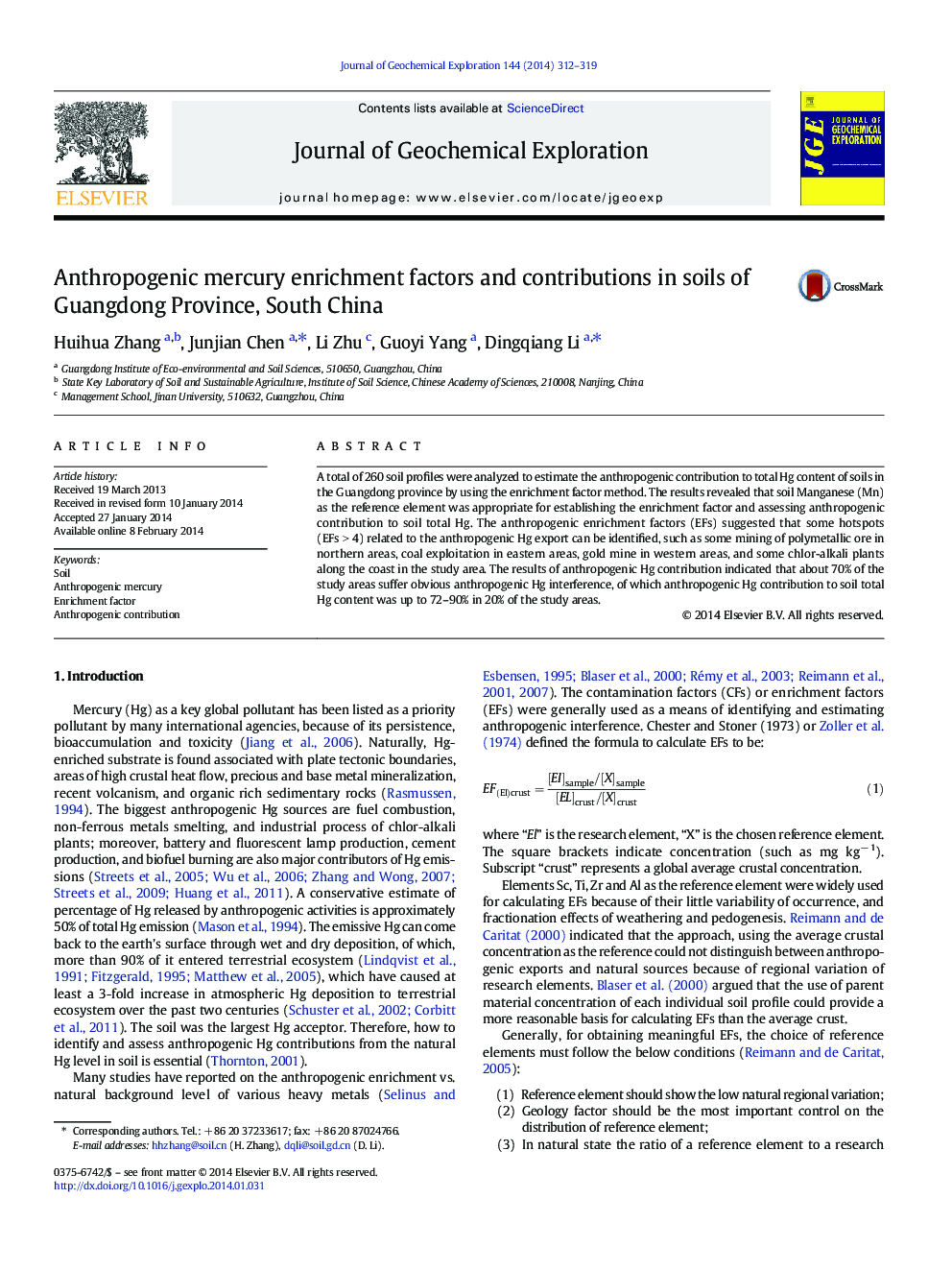| Article ID | Journal | Published Year | Pages | File Type |
|---|---|---|---|---|
| 4457381 | Journal of Geochemical Exploration | 2014 | 8 Pages |
•Anthropogenic Hg interference can be identified by using Mn as a reference element.•Spatial distribution of anthropogenic Hg sources was consistent with that of Hg EFs.•About 50% of the study area suffer the obvious anthropogenic Hg interference.•Anthropogenic Hg contribution is up to 72%–90% in about 20% of total area.
A total of 260 soil profiles were analyzed to estimate the anthropogenic contribution to total Hg content of soils in the Guangdong province by using the enrichment factor method. The results revealed that soil Manganese (Mn) as the reference element was appropriate for establishing the enrichment factor and assessing anthropogenic contribution to soil total Hg. The anthropogenic enrichment factors (EFs) suggested that some hotspots (EFs > 4) related to the anthropogenic Hg export can be identified, such as some mining of polymetallic ore in northern areas, coal exploitation in eastern areas, gold mine in western areas, and some chlor-alkali plants along the coast in the study area. The results of anthropogenic Hg contribution indicated that about 70% of the study areas suffer obvious anthropogenic Hg interference, of which anthropogenic Hg contribution to soil total Hg content was up to 72–90% in 20% of the study areas.
